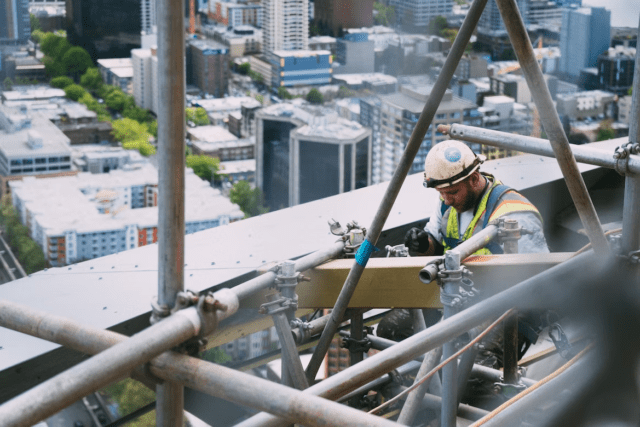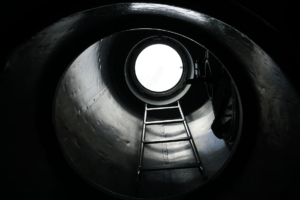
Working in a confined space can be dangerous, and it’s essential to take safety precautions when doing so. Even the most experienced workers can make mistakes or overlook potential hazards if they don’t understand the risks involved. To help you stay safe, here are some of the best tips from experts in the field on how to safely work in a confined space – from pre-entry planning and preparation to safety equipment selection and post-entry clean-up. Whether you are new to working in such environments or just need a refresher course on best practices, these tips have something for everyone!
Getting Trained In Confined Space Entry Procedures
Before entering a confined space, workers should be properly trained in safe entry practices. This includes understanding the different types of spaces and their associated risks, how to use personal protective equipment (PPE) and identifying potential hazards and safety measures to navigate them. Getting a confined space certification is the best option if you’re considering doing such a job because it ensures that you have the knowledge and skills necessary to work in such an environment. Additionally, it’s important to inspect the area and be aware of any new or changing hazards that might have occurred since your last visit.
Pre-Entry Planning And Preparation
Before entering a confined space, workers must take time to plan and prepare for the job at hand. This includes identifying potential hazards, assessing the risk of hazardous substances being present, choosing appropriate PPE, ensuring adequate ventilation is available, evaluating the need for any special equipment or tools, and communicating with the site supervisor or safety personnel about the tasks ahead. It’s also important to ensure that all workers understand their roles and responsibilities before entering a confined space so they can safely and efficiently complete their tasks.
Selecting Appropriate Safety Equipment
When working in a confined space, the proper safety equipment is essential to minimize the risk of injury or death. Proper PPE must be selected based on potentially hazardous substances and environmental conditions, and workers should always wear a harness and lifeline securely attached to an anchor point outside the space in case of an emergency. In addition, it’s important to have a gas detector and other necessary tools, such as ventilation fans or breathing apparatus, readily available to ensure safe working conditions. For example, if there is a risk of asphyxiation in a confined space, workers should be outfitted with respiratory protection equipment such as air-purifying respirators or self-contained breathing apparatus.
Establishing An Emergency Response Plan
All personnel must understand what to do in case of an emergency while working in a confined space. Before entering a space, it’s important to establish an emergency response plan with predetermined roles for each person involved and a clear chain of command. This plan should include steps to take in the event of an emergency such as loss of communication, hazardous substance leaks, fire, or other dangerous situations. When writing the response plan, ensure that it is thorough and clearly outlines each step to avoid any confusion or misunderstanding. Additionally, make sure all personnel are familiar with the emergency response plan before entering a confined space.
Implementing Communication Protocols
When working in confined spaces, workers must communicate effectively with each other and their supervisors at all times. Establish protocols for continuous two-way communication during work hours so that any issues can be addressed quickly and efficiently before they become major hazards. It’s also important to ensure that everyone is aware of safety regulations and procedures related to the job so that any mistakes or misunderstandings can be corrected immediately. Additionally, implementing a communication protocol can help ensure that everyone is working in the best interest of safety, productivity, and overall well-being.
Monitoring The Atmosphere In Confined Spaces
Regardless of the type of confined space, workers must continuously monitor the atmosphere for any changes or signs of hazardous substances. This includes checking gas levels and oxygen levels both before and during work hours. If any dangerous gases or air pollutants are detected, workers should evacuate immediately and call for assistance from qualified personnel to assess the situation. Additionally, workers should also be aware of any physical signs or symptoms that could indicate exposure to hazardous gases, and if so, evacuate the area immediately.
Implementing Post-Entry Cleanup Procedures
Once all tasks have been completed in a confined space, it’s important to ensure that the area is adequately cleaned up and returned to its original state. This includes removing debris or hazardous materials left behind, restoring ventilation systems, and conducting a final safety inspection to make sure everything is safe before leaving the area. It’s also essential to provide proper disposal containers for all used safety equipment and hazardous substances. Additionally, proper labeling of items and implementation of a standardized post-entry cleanup procedure can help ensure that each entry goes smoothly and safely.
Maintaining Accurate Records
Accurate record-keeping is essential for confined space entry, as it can help ensure that everyone involved understands the rules and regulations related to the job. This includes keeping track of all permits, testing results, emergency response plans, safety equipment used, and any other relevant information about working in a confined space. By maintaining accurate records of this type of information, workers can ensure that everyone involved is informed and protected against potential hazards while on site. And while it may seem like a tedious task, record-keeping is an essential part of confined space safety and should not be overlooked. Additionally, keeping accurate records can help prevent legal issues down the line, so it’s worth investing in a system that makes it easy to store and access this information.

By following these safety procedures, workers can stay safe while working in confined spaces and reduce the risk of accidents and injuries. Taking the time to plan, prepare, and implement appropriate protocols can help ensure that all personnel are aware of the risks involved and take action to minimize them. With proper preparation, knowledge, and training, workers can safely perform their duties without compromising safety standards.


































